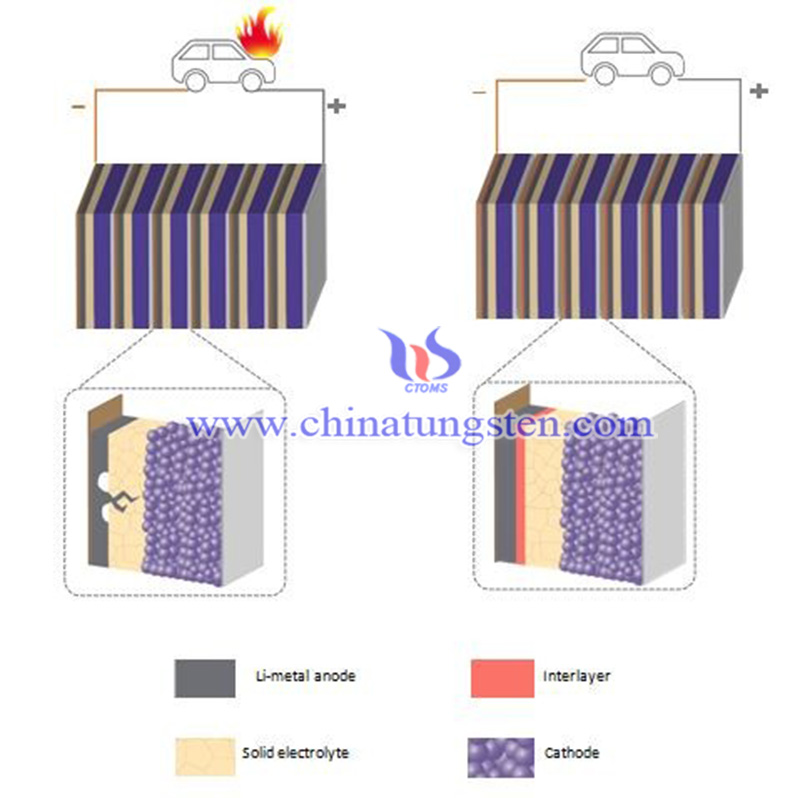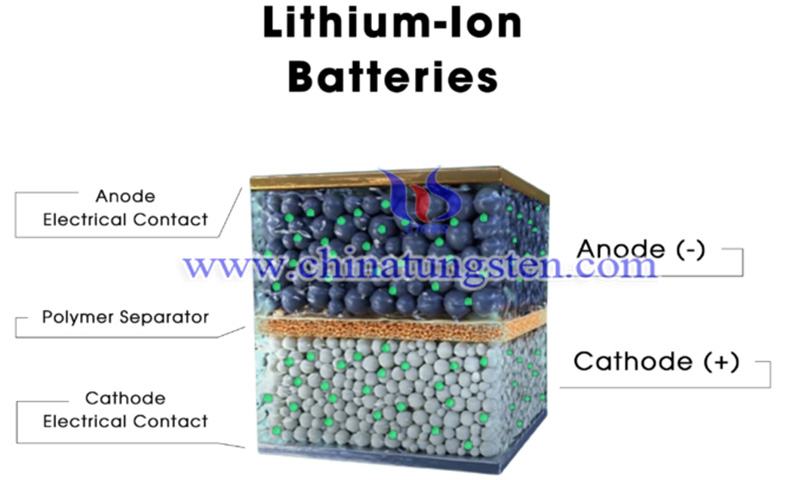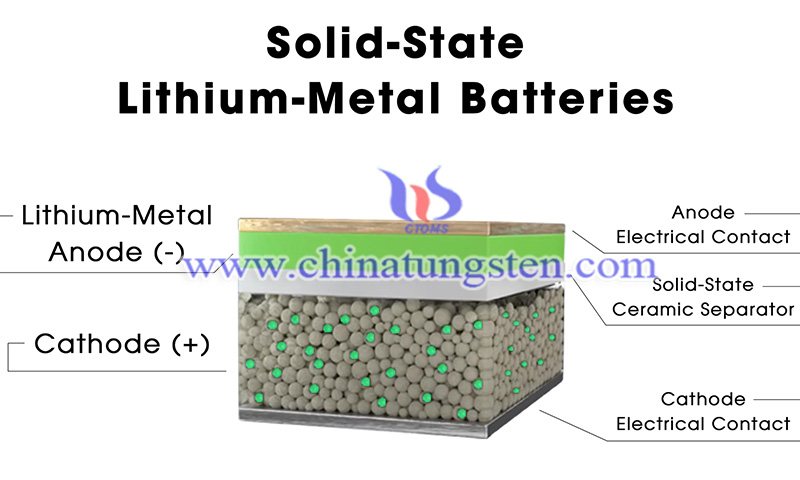Nanoscopic Refractory Tungsten Layers to Improve Lithium Battery Performance
- Details
- Category: Tungsten's News
- Published on Monday, 11 July 2022 18:30
Researchers from the Indian Institute of Science, Bangalore, in collaboration with researchers at Carnegie Mellon University, have found that nanoscopic metal layers such as refractory tungsten layers can improve the growth tolerance of dendritic in solid-state lithium battery electrolytes.

(Image source: PIB, Indian government)
Solid-state lithium-ion batteries with lithium anodes offer higher energy density and are safer than conventional liquid electrolyte-based lithium-ion batteries. However, a long-term challenge for solid-state batteries is the growth of lithium dendrites on the solid electrolyte layer, leading to premature short-circuiting of the battery.
Researchers from the Indian Institute of Science, Bangalore, have proposed a new approach to interface engineering to enable fast charge-discharge rates in solid-state lithium battery. They found that nanoscale layers of refractory metals like tungsten can improve the performance of these cells by improving the tolerance of dendritic growth in the solid-state electrolyte.
The team found that lithium ion currents are concentrated at the edges of microscopic voids. The current at these edges is approximately 10,000 times higher than the average current within the cell. Therefore, it is necessary to hinder the growth of the voids to prevent the growth of dendrites.
(Image source: flashbattery.tech)
To delay void growth, the researchers tested an ultrathin tungsten layers between the lithium anode and the solid electrolyte. They noted that because of its low solubility for lithium, tungsten is an ideal candidate to impede the movement of lithium vacancies and therefore delay the growth of voids. In collaboration with researchers at Carnegie Mellon University, they confirmed their work through computational methods.
Solid-state lithium batteries are flourishing due to their excellent potential energy density. Substantial efforts have been made to improve their electrochemical performance by increasing the conductivity of solid-state electrolytes (SEs) and designing a compatible battery configuration.
The team now plans to build on these advances to develop all-solid-state batteries that can be charged in less than an hour while delivering up to 1,000 or more cycles at temperatures of 45 degrees Celsius or higher.

(Image source: flashbattery.tech)
- Tungsten Manufacturer & Supplier, Chinatungsten Online: www.chinatungsten.com
- Tungsten News & Prices of China Tungsten Industry Association: www.ctia.com.cn
- Molybdenum News & Price: news.molybdenum.com.cn
- Tel.: 86 592 5129696; Fax: 86 592 5129797; Email: sales@chinatungsten.com




 sales@chinatungsten.com
sales@chinatungsten.com